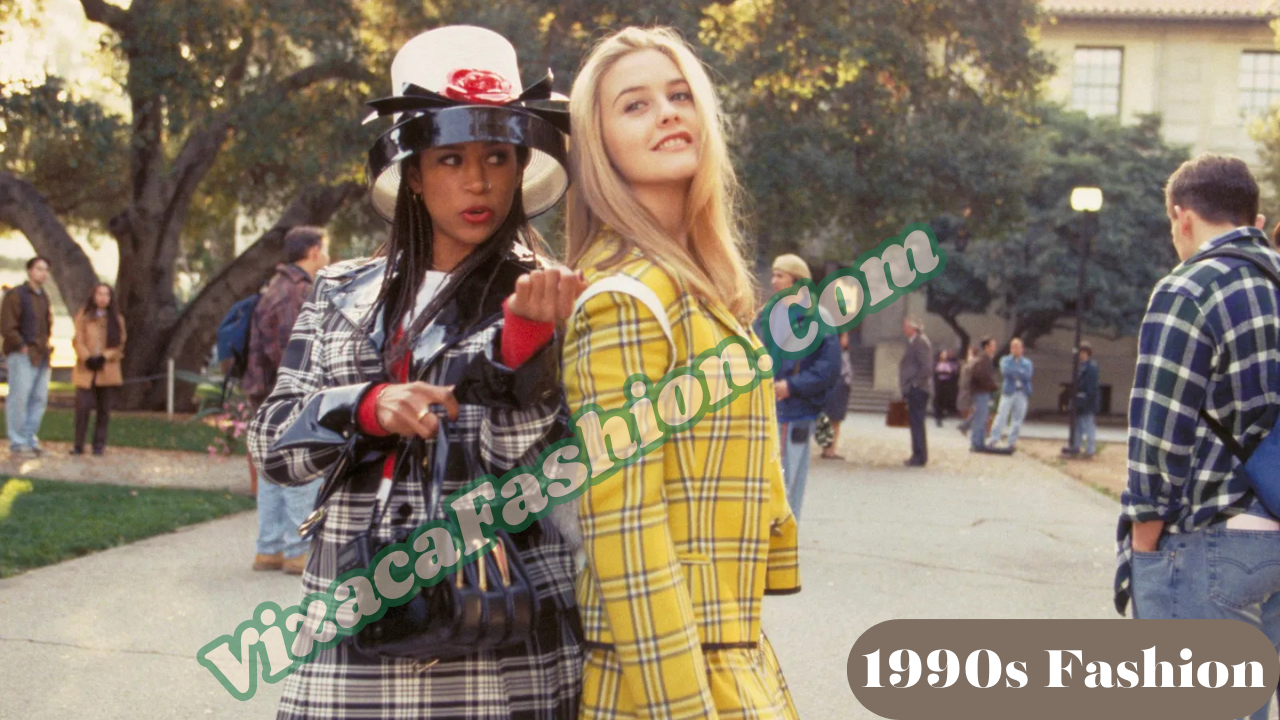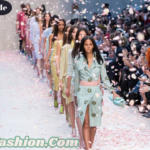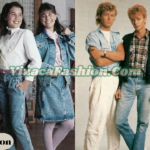The 1990s were a transformative decade in the world of fashion. A blend of minimalism, grunge rebellion, and cultural fusion defined the era, making it one of the most influential periods for style. The decade’s fashion trends continue to inspire contemporary designers and everyday wear, highlighting the enduring appeal of the 1990s.
The Rise of Grunge Fashion
One of the most iconic trends of the 1990s was grunge fashion. Rooted in the music scene of Seattle, grunge emerged as a countercultural movement that rejected the polished looks of the 1980s. Bands like Nirvana and Pearl Jam not only defined the sound of grunge but also its aesthetic.
Key Elements of Grunge Style:
- Flannel Shirts: Often layered over graphic tees or worn tied around the waist.
- Distressed Denim: Ripped jeans became a hallmark of grunge, symbolizing a laid-back and anti-establishment attitude.
- Combat Boots: Brands like Dr. Martens gained immense popularity during this time.
- Oversized Silhouettes: Baggy sweaters, loose-fitting jeans, and oversized jackets characterized the style.
Grunge fashion was more than just clothing; it was an expression of individuality and nonconformity, making it a defining trend of the 1990s.
Minimalism and the “Less Is More” Approach
Contrasting the rebellious tones of grunge was the rise of minimalism. Inspired by designers like Calvin Klein and Jil Sander, this trend emphasized clean lines, neutral palettes, and understated elegance. The minimalist aesthetic became synonymous with sophistication and modernity.
Hallmarks of Minimalist Fashion:
- Neutral Colors: Black, white, beige, and gray dominated minimalist wardrobes.
- Tailored Pieces: Slim-fit trousers, simple blazers, and pencil skirts were popular choices.
- Slip Dresses: Often made from satin or silk, these dresses were both sleek and sensual.
- Barely-There Makeup: Minimalism extended beyond clothing to beauty trends, with a focus on natural, fresh-faced looks.
Minimalism’s simplicity offered a stark contrast to the over-the-top styles of the 1980s, marking a shift in the fashion narrative of the decade.
The Influence of Hip-Hop Culture
The 1990s also saw the meteoric rise of hip-hop culture, which had a profound impact on fashion. Artists like Tupac Shakur, Notorious B.I.G., and Salt-N-Pepa brought urban streetwear to the forefront, blending practicality with bold statements.
Key Features of Hip-Hop Fashion:
- Baggy Clothing: Oversized jeans, T-shirts, and hoodies were staples.
- Tracksuits: Brands like Adidas and FUBU became synonymous with hip-hop style.
- Sneakers: Sneakers, particularly Air Jordans, became both a fashion statement and a cultural symbol.
- Gold Chains and Accessories: Statement jewelry, including chunky gold chains and hoop earrings, completed the look.
Hip-hop fashion in the 1990s represented empowerment and cultural identity, influencing streetwear trends for decades to come.
The Revival of 1970s and 1980s Styles
The 1990s were also marked by a nostalgic revival of earlier decades’ trends. Designers and fashion enthusiasts drew inspiration from the bold styles of the 1970s and 1980s, creating a unique blend of retro and modern looks.
Examples of Revived Trends:
- Platform Shoes: A nod to the disco era, platform sneakers and sandals gained popularity.
- Bell-Bottom Jeans: Flared jeans made a brief comeback, often paired with crop tops.
- Neon Colors: Bright, eye-catching hues reminiscent of the 1980s found their way into 1990s wardrobes.
- Shoulder Pads: While toned down, structured shoulders remained a feature in women’s blazers and dresses.
This revival demonstrated the cyclical nature of fashion, with past decades continually influencing modern styles.
Pop Culture and Celebrity Influence
Pop culture played a significant role in shaping 1990s fashion. Television shows, movies, and music icons became trendsetters, dictating what was considered stylish.
Notable Pop Culture Fashion Influences:
- TV Shows: Shows like Friends and Beverly Hills, 90210 popularized casual, everyday looks such as mom jeans and cropped tops.
- Music Icons: Madonna’s bold and experimental style, the Spice Girls’ colorful outfits, and Britney Spears’ schoolgirl-inspired ensembles left lasting impressions.
- Supermodels: The “Big Five” supermodels—Naomi Campbell, Cindy Crawford, Linda Evangelista, Claudia Schiffer, and Christy Turlington—dominated runways and magazine covers, showcasing high-fashion trends to the masses.
Celebrity influence made 1990s fashion both aspirational and accessible, blurring the lines between high fashion and street style.
Techwear and the Dawn of Futuristic Fashion
The 1990s also laid the groundwork for tech-inspired fashion. As technology advanced, designers began experimenting with materials and designs that reflected the futuristic optimism of the time.
Features of Techwear:
- Metallic Fabrics: Shiny, reflective materials were used in jackets, pants, and accessories.
- Utility-Inspired Designs: Cargo pants, zippered pockets, and multifunctional clothing became popular.
- Slim Sunglasses: Often referred to as “matrix glasses,” these became a staple accessory in the late 1990s.
Techwear hinted at the possibilities of blending fashion with innovation, a concept that would grow in the decades to follow.
Everyday Casual and Athleisure
Comfort became a priority in the 1990s, leading to the rise of casual and athleisure wear. This trend made everyday clothing practical yet stylish, appealing to people across various demographics.
Key Casual Trends:
- Denim Everything: Denim jackets, jeans, and even overalls were wardrobe essentials.
- Graphic T-Shirts: Featuring band logos, slogans, or pop culture references.
- Sneakers: Worn not just for sports but as a key part of everyday outfits.
- Windbreakers: Lightweight and colorful, these became a popular outerwear choice.
Athleisure’s blend of functionality and fashion ensured its widespread appeal, setting the stage for its continued popularity in the 21st century.
Legacy of 1990s Fashion
The 1990s were a decade of diversity in fashion. From the grunge rebellion to minimalist elegance, hip-hop’s bold statements to retro revivals, the era offered something for everyone. Its influence is still evident today, with many of its trends experiencing resurgences in modern wardrobes.
Whether it’s the return of flannel shirts or the timeless appeal of slip dresses, 1990s fashion remains a testament to the power of self-expression and cultural evolution. It was a decade that embraced individuality, setting the tone for the dynamic and inclusive world of fashion we know today.


